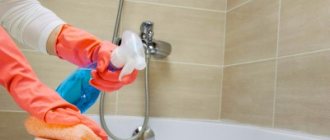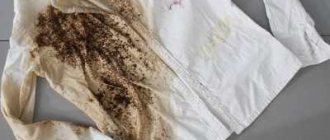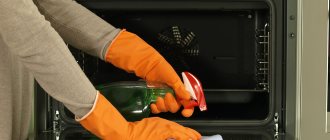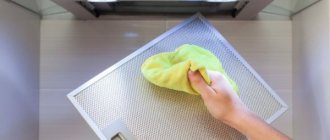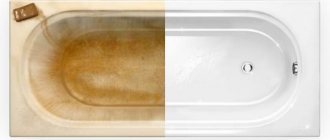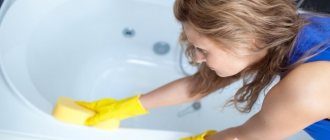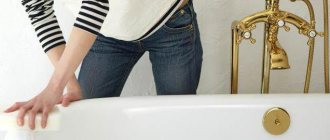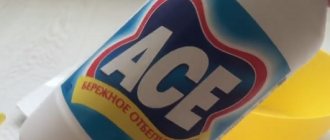Available means
To clean an acrylic bathtub, you do not always need to buy expensive compounds. You can remove simple stains using available products.
Lemon acid
Citric acid works great against limescale. Use it as follows:
The bathtub needs to be filled with hot water. The maximum permissible temperature is 60 degrees.- Pour 2 bags of acid into the water and stir until completely dissolved.
- Leave the product to act for 2 hours.
- Rinse the bathtub with clean water, remove the residue with a dry cloth.
If the stains are not extensive, then citric acid is dissolved in a glass of water and applied to the stains with a sponge. After an hour, the solution is removed.
Toothpaste
Toothpaste whitens yellowness well and removes rust. Instructions for use:
- squeeze a small amount of paste onto the stain;
- spread it over the surface and leave for 15 minutes;
- Gently scrub the bathtub with an old soft-bristled toothbrush;
- rinse off the paste with water.
Ammonia
You can eliminate dark and yellow spots using ammonia and hydrogen peroxide.
Use the composition as follows:
- Mix alcohol and peroxide in equal proportions.
- Soak a sponge in the solution.
- Apply the composition to the contaminated areas and gently rub with a soft brush.
- Rinse the surface with clean water.
Soda
You can remove limescale and soap deposits using a soda solution. Mode of application:
- dilute baking soda with clean water until a paste forms;
- apply it to contaminated areas;
- leave for 15 minutes;
- rub with a sponge, rinse with water.
Apple vinegar
Apple cider vinegar is a safe way to remove simple stains. Use it as follows:
- Soak the sponge in vinegar.
- Apply it to the contaminated area.
- Leave to whiten for 15 minutes.
- Wash off the product with warm water.
Apple cider vinegar helps to cope not only with yellowness, but also with lime deposits.
Traditional methods
Some of them can be safely used to remove stains from your bathtub.
Often used to remove stains and plaque:
- citric acid;
- liquid soap;
- soda;
- hydrogen peroxide;
- toothpaste;
- ammonia;
- laundry and baby soap;
- vinegar;
- whiteness, etc.
Vinegar
To remove contaminants, you cannot use 72% vinegar essence: this will damage the structure of the acrylic. It is recommended to clean the bathtub with a 9% solution. Vinegar is good at removing plaque and yellowing caused by high chlorine content.
Apple vinegar
A practical substance, but it does not always have a positive effect on acrylic. The main feature is low pH and high acidity. For a material, this factor turns out to be critical, especially if there are scratches. You should work quickly and carefully. The recommended method is to generously soak a cloth in the solution, apply it to the stain and pour water on it.
We recommend using this method at least once every six months.
In case of heavy contamination:
- Prepare 9% vinegar in an amount of 1 liter;
- Fill two-thirds full with hot water;
- Pour out the vinegar;
- Wait for the night;
- Rinse and wipe
Liquid soap
It copes well with the gray coating that occurs during daily use of the bathtub. Apply the product to the sponge, carefully treat all the walls with it and leave it for a quarter of an hour. After this, thoroughly wipe the surface again. Then the remaining liquid soap is washed off with plenty of water.
After this, the acrylic coating must be dried with a soft cloth and treated with polish.
Hydrogen peroxide + vinegar
This method helps fight the yellow plaque that forms over time. You need to take 3 parts of 9% vinegar and 1 part of hydrogen peroxide, mix. Using a sprayer, the prepared liquid should be applied to the yellowed areas. After 10-20 minutes, the coating should be washed with water and wiped with a dry cloth.
Mustard + soda
If you don’t have any suitable household cleaning products at home, then this method can help out. You need to take mustard powder and soda in equal proportions, mix, and then dilute with warm water to a paste. The prepared paste is applied to the yellowed areas for half an hour, after which it is washed off.
Soda
It is an abrasive, so in its pure form it is not used to clean the bathtub, because... will leave severe scratches on the coating. It is safer to use a solution to bleach the surface.
First, the bathtub is filled to the brim with warm water. Then add 1 pack of soda to the liquid. The solution is left for 1 hour. After this, you need to drain it and rinse the walls.
To remove old stains, use a paste of baking soda. To prepare it, the substance is poured into a glass plate and a little water is added there. The composition is stirred until the crystals dissolve. The mixture should acquire a creamy consistency. Dilute soda is applied to the contaminated areas. After 20 minutes, wash off the remaining product with plenty of water.
A baking soda solution is perfect for removing dirt from acrylic surfaces.
Laundry soap
grated laundry soap
This is a universal remedy that copes with a large number of different stains and dirt. The soap should be grated and diluted in warm water. The result should be a homogeneous gel, to which you should add 50-75 fine salt. The prepared paste should be kept on contaminated areas for about 1 hour.
Citric acid (juice)
Citric acid powder is most often used, but juice can also be used. The first option is the most convenient. However, the crystalline substance is not used in its pure form, because it is abrasive and may damage the finish.
First, the powder is diluted in water until completely dissolved. After this, it is applied with a sponge to the walls of the bath. After 15 minutes, wash off the residue and dry the surface with a soft cloth.
Ammonia and hydrogen peroxide
The substances are quite aggressive, so their exposure should be short-term. To clean fresh rust, 5-7 minutes are enough. The ingredients are mixed in equal proportions and applied to problem areas. The maximum permissible exposure time is 10 minutes.
Toothpaste
Acrylic came to plumbing from dentistry - it was used for lining the frames of dentures and making crowns, so cleaning the bathtub with toothpaste is quite acceptable.
The procedure should not be carried out more than once every two months.
Buy a non-abrasive paste. The manufacturer may not indicate this on the packaging. Abrasive particles are similar to small grains of sand that remove plaque from teeth, but they will greatly damage the surface of the bathtub. Before use, squeeze a small amount of paste onto your finger and rub it - the sand is immediately noticeable.
- Apply the paste to a sponge or napkin;
- Wipe the dirty surface;
- Clean with water;
- Rub until shiny
Special formulations
To clean an acrylic bathtub, you can use the following store-bought products:
Cinderella emulsion
This composition is intended for processing acrylic . After its use, a protective film is formed on the surface, and the bath acquires a characteristic shine. The composition is based on anionic and nonionic surfactants.
Before use, the bottle must be shaken thoroughly. To remove stubborn stains, leave the product on the surface for 10 minutes. The price of the bottle is 80 rubles.
Spray Unicum
It can be used to combat:
- rust,
- mold,
- soap and limescale deposits.
The composition is destructive to fungi, so it can be used for antiseptic treatment. The formula includes acids in acceptable concentrations and anionic surfactants.
The use of the product gives the bath its original shine and leaves behind a protective layer. Price – 200 rubles.
Sanfor gel Acrylight Professional
This gel effectively removes rust, limescale and soap deposits , and copes with unpleasant odors. Its formula is enhanced with citric acid and surfactants.
The product has an antibacterial effect. Price – 150 rubles.
The listed compositions can be purchased in retail stores, in departments with household chemicals, as well as in online markets.
Video about using the Sanelit cleaning product for cleaning acrylic bathtubs:
Cleaning your hot tub
If hydromassage equipment is installed in the bathroom, weekly cleaning of the nozzles and regular disinfection of the system will be required. When soap suds, residual dirt and organic compounds get into the hoses, they begin to decompose and cause an unpleasant odor. When water circulates in the system, this dirt ends up in a common tank, which makes the bathing procedure unhygienic.
To fix the problem yourself, you can purchase special disinfectants for hot tubs. The bath is filled with warm water, an antiseptic is added and the hydromassage is started for 10 - 15 minutes. Then the water is drained and the bath is thoroughly washed to remove any remaining disinfectant.
Antibacterial solution Ravak Disinfectant for plumbing and hydromassage systems.
Note: Chrome whirlpool jets can only be cleaned with products designed for chrome surfaces. This should be taken into account when choosing a bath detergent. Otherwise, the chrome elements may darken or become stained.
At least once a year, it is advisable to contact specialists who will professionally disinfect and clean the hydromassage unit - including the filter and water supply system.
Features of removing various contaminants
Depending on the type of contaminant, different compositions must be used. This allows for increased cleaning efficiency.
Limescale
You can get rid of limescale using citric or acetic acid . For processing, do not use an overly concentrated solution. If the layer is old, then for 1 glass of water you will need 1 packet of citric acid or 2 tablespoons of vinegar.
Apply the product to the stains and leave for 20 minutes. During this time, contaminants must be periodically moistened. Wash off the product with warm water. If necessary, repeat the procedure. If it was decided to use household chemicals, then it should contain citric or oxalic acid.
Soapy
You can get rid of soap scum using baking soda, vinegar and water. They are used as follows:
- Soda is diluted with water to form a paste and applied to the stains.
- Mix table vinegar and water in equal proportions in a spray bottle.
- The resulting solution is applied to dried soda and rubbed with a soft brush.
- Wash off the product with clean water.
If you don’t want to use improvised means, then you can purchase any universal composition that is designed for caring for acrylic bathtubs. All of them are able to remove soap scum.
Mold
Hydrogen peroxide helps fight mold. Use it as follows:
- soak a sponge with peroxide;
- treat areas where mold has appeared with it;
- leave for an hour;
- carry out repeated processing;
- wash off the composition with hot water.
In addition to the fact that the pharmaceutical preparation will destroy the fungus, it will also whiten the yellowed areas. When choosing store-bought formulations, you need to purchase a product labeled “antibacterial.”
Yellowness
To get rid of yellowness, you can use the following means:
- A mixture of soda ash and baking soda. They are combined in equal proportions, applied to the yellow areas and filled with table vinegar. After an hour, the product is washed off.
- Ammonia. It will take at least half an hour to have an impact. All this time, the door to the bathroom must be open.
- A mixture of washing powder with bleach and grated laundry soap. The components are diluted with water to a paste-like state and applied to the yellowed areas for an hour.
- Hydrogen peroxide. It has pronounced whitening properties.
Yellow rust stains
You can get rid of rust with Coca-Cola. This unique product will not damage acrylic, but will perfectly dissolve rust.
Use it as follows:
- the bath is rinsed with water and dried;
- apply cola to a rag and apply it as a compress to rusty stains;
- As the rag dries, it needs to be moistened;
- After 3 hours, the bath is rinsed with clean water.
During this time, the rust will dissolve and be easily washed off from the surface being treated.
How to remove scratches
If scratches do appear on the bathroom, they can and should be eliminated to avoid further damage to the material. Cracks, chips and defects that form when the surface is corroded by aggressive substances also require restoration.
Acrylic bathtubs are easy to restore, so minor defects can be removed at home. Scratches can be removed fairly quickly:
- the damaged areas are carefully sanded with sandpaper of different grain sizes (from coarse to fine);
- A special polishing compound is applied to the cleaned area and treated with a fleece or special cloth in accordance with the instructions.
Note: Small scratches can be removed with a special polishing pencil for acrylic surfaces.
Serious defects can be eliminated using putty, liquid acrylic and polish. Often such work is entrusted to professionals, but if you wish, you can do it yourself in several stages:
- Use masking tape to separate defects from undamaged areas;
- cracks and chips are sealed with starting putty;
- after the putty layer has dried, the damaged areas are rubbed first with coarse-grained sandpaper, then with fine-grained sandpaper;
- if small unevenness remains, add a layer of finishing putty and, after it has dried, sand the surface again with fine-grained sandpaper;
- remove the masking tape and degrease the surface with alcohol;
- after all layers of putty have completely dried, a special paint is applied to the treated areas (its color is selected in accordance with the shade of the bathtub);
- Finally, polish is applied to the dried layer of paint.
For convenience, you can purchase a repair kit for acrylic bathtubs. The standard kit includes polish, a set of sandpaper of different grits and polishing cloth.
Repair kit for acrylic.
Step by step how to remove scratches is described in the video below:
What can't be used and why?
To wash an acrylic bathtub, you cannot use the following products:
- Acetone. It can lead to thinning of the acrylic layer and rapid wear of the bathtub.
- Abrasive substances. This applies not only to cleaning powders, but also to regular soda. It can only be used in diluted form. The use of abrasive compounds contributes to the appearance of scratches.
- Highly concentrated acids, for example, vinegar essence.
- Paint thinners, gasoline.
- Boiling water. To prevent acrylic from cracking, the water temperature should not exceed 60 degrees.
- Chlorine and cleaning products based on it. Its use leads to the formation of pores, which reduces the service life of the product.
- Formaldehyde. These substances are not only toxic, but also completely incompatible with acrylic.
Reasons for color change
The change in color of the bathtub is influenced by a number of factors: from the material from which the surface of the bathtub is made to the frequency of use of the bathtub and the composition of the water. To understand how you can bleach a bathtub without irreversible consequences, you need to take all these factors into account.
Based on the material used, modern bathtubs are divided into:
- cast iron;
- plastic;
- metal.
Cast iron and metal bathtubs can have either enameled or acrylic coating. In both cases, you should not bleach the bathtub at home with powder detergents, abrasives and hard metal brushes. This approach will only worsen the situation, as many small scratches will appear on the surface of the bathtub.
Among the factors leading to the need to bleach a bathtub at home, it is necessary to highlight:
- the quality of tap water, which provokes the appearance of rust stains or limescale on the walls of the bathtub;
- accumulation of organic particles remaining after washing on the walls of the bathtub: fat, dead skin flakes, etc.;
- the use of aggressive chemical detergents that corrode the bathtub coating;
- violation of the rules for using and washing the bathtub, improper care of the bathtub.
Helpful information
Tips for caring for an acrylic bathtub:
When using any chemicals, rinse with cool, not hot, water. At high temperatures they increase their activity and can cause damage to acrylic.- Before using a detergent, you should carefully study its composition. It should not contain components that can destroy acrylic.
- You cannot mix several formulations at once unless indicated in the recipe. Multicomponent substances can accelerate the deterioration of the product.
- When washing the bathtub, you need to take care of the safety of the skin of your hands by protecting them with gloves.
All the most important and useful information about cleaning the bathroom is collected in this section of the site.
Rules for caring for different coatings
Bathtubs are made from different materials and with different types of coating:
- Acrylic;
- Cast iron, coated with enamel;
- Steel;
- Plastic.
How to whiten an acrylic bathtub at home
The main thing for acrylic bathtubs is gentle cleaning. The coating is quite capricious; it is afraid of acids, powder cleaners, and soap. What to do? After each use of such plumbing equipment, it must be wiped dry and washed with detergents no more than once every 2 weeks.
Speaking of cleaners, we recommend trying “Triton” or “Sanklin”; it is also good to use the “Pani Vanna” detergent for acrylic coatings.
Under no circumstances use solvents, acidic or alkaline agents, benzine, alcohol, cleaning pastes, or powders. All these components corrode the acrylic so that it is no longer possible to save the coating.
But acrylic needs to be disinfected and this can be done like this:
- pour warm water into the bath;
- add simple chlorine (7%) to the liquid;
- leave the resulting mixture for 5 minutes;
- drain the water, rinse the coating with water and wipe dry.
How to whiten a cast iron bathtub at home
Cast iron bathtubs, as a rule, are installed in houses of the old type of projects from the 50s to 70s of the last century. Cast iron bowls contain salt impurities, which are the root cause of damage to the appearance of plumbing fixtures.
To clean cast iron containers, you should not buy products containing chlorine, acid or abrasive particles, which can damage the coating. Opt for soft gel detergents.
Modern cast iron bathtubs are coated with durable enamel and fired at high temperatures during manufacturing. To clean such coatings, soda-based products are used, for example, Pemolux.
If you have restored an old cast iron bathtub, then wash it with laundry soap and a soft sponge, making sure that it is always wiped clean from excess moisture.
How to whiten a steel bathtub at home
Steel bathtubs also cannot be washed with products containing small particles. Scratches on steel appear faster and more expressively than on all the coatings described above. Metal scourers and brushes also scratch the bathtub, leaving permanent marks.
It is best to use new detergents from the store for cleaning, but you should not use traditional methods based on alcohol, vinegar, soda. Stains on the steel coating are spot cleaned.
Prevention
An important measure to combat contamination on the surface of acrylic bathtubs is proper care in compliance with the manufacturers' recommendations. Using the product correctly is much easier than washing an acrylic bathtub at home. Following these 4 simple rules will significantly extend the life of your plumbing fixtures:
- It is necessary to rinse the font with warm running water after each use.
- It is not allowed to use water with a temperature of more than 70 degrees in acrylic containers for washing.
- After each use, the bathtub should be thoroughly dried by ventilating the room or using a soft cloth.
- The product should be cleaned with a disinfectant composition 1-2 times a week as the surface becomes dirty.
Remember that by using a low-quality or unsuitable product to clean an acrylic bathtub, you are not getting rid of dirt, but of expensive plumbing fixtures!
Sources
- https://sovety-vannoy.ru/vanna/akrilovaya/chem-chistit-v-domashnix-usloviyax.html
- https://uborkapro.info/uborka/myt-akrilovuyu-vannu-doma.html
- https://www.kanalizaciya-stroy.ru/chem-myt-akrilovuyu-vannu-v-domashnix-usloviyax.html
- https://hypnohome.ru/chem-mozhno-myt-akrilovuyu-vannu-soda-i-drugie-sredstva/
- https://vannadecor.ru/remont-i-otdelka/santekhnika/chem-mit-akrilovuiu-vannu-rekomendatsii-professionalov.html
- https://septik27.ru/sredstva-dla-cistki-akrilovyh-vann-obzor-effektivnyh-variantov/
- https://yborka.online/uborka/kak-ochistit-vannu/akrilovuyu
- https://stroitelniportal.ru/stati/santehnika/proverennye-sposoby-ochistki-akrilovyh-poverhnostej-ot-razlichnyh-zagryaznenij/
- https://vasha-stroika39.ru/interesnoe/chem-i-kak-myt-akrilovuyu-vannu-ne-povrediv-ee.html
- https://www.ivd.ru/stroitelstvo-i-remont/santehniceskoe-oborudovanie/chem-chistit-akrilovuyu-vannu-narodnye-sredstva-i-specialnaya-himiya-50101
- https://MasteraVannoy.ru/problemy/chem-chistit-akrilovuyu.html
- https://heaclub.ru/akrilovye-vanny-kak-uhazhivat-chem-myt-akrilovuyu-vannu-v-domashnih-usloviyah
- https://santehnik-market.ru/vodosnabzhenie/chistka-akrilovoj-vanny-v-domashnih-usloviyah-kak-i-chem-chistit-luchshee-sredstvo.html
495
Is it worth disinfecting?
In limescale, in fats and in general in various organic substances that have nutritious microflora, fungus easily multiplies. That is why the bathtub needs to be cleaned in a timely manner, and if you do not have the opportunity to immediately get rid of dirt, it is necessary to carry out complete disinfection using special means.
This is very simple to do: you need to select a disinfectant composition that is compatible with the acrylic coating, fill the bathtub with warm water and dissolve the product in it. Afterwards, you only have to wait ten minutes. Then rinse everything well. This method is very quick and simple, and we strongly recommend that this disinfection be carried out regularly.
Can I clean with a steam cleaner? Of course, such a device can also be used for disinfection. Hot steam kills germs. The main thing here is not to overdo it with heating the coating. Don't stay in one place for too long.
We can also recommend the following method:
- fill the bathtub with warm water;
- dissolve two liters of 7% white in it;
- leave for ten to fifteen minutes;
- flush the water and run the bath again;
- clean off any remaining product and drain the water;
- Wipe the bathtub dry with a soft cloth.
The most effective means for disinfecting your bath: Domestos, Sanox, Ravak Disinfectant.
Is it possible to wash with white at home?
Whitening can certainly remove tough stains from a variety of surfaces. But at the same time, you need to remember that this product is very aggressive for such a delicate sanitary ware and you cannot clean the bathtub with it. The danger of using it is that after several cleaning procedures, the acrylic coating becomes very porous. As a result, dirt, rust and salt deposits settle in these places “tightly”, the surface of the bathtub deteriorates to such an extent that it is often beyond repair. Also, chlorine causes yellowness, which is extremely undesirable for any housewife.
So you’ve learned how to safely clean an acrylic bathtub using both commercial and folk remedies. One or more of them is sure to be found in every woman’s household.
Acrylic bathtubs are a good alternative to heavy cast iron and quickly cooling steel ones. These products are not subject to corrosion and contain special antibacterial components that block the growth of fungus and mold. With care and the right approach to washing, such plumbing fixtures can serve their owners for a long time without fading and pleasing the eye with their bright whiteness.
